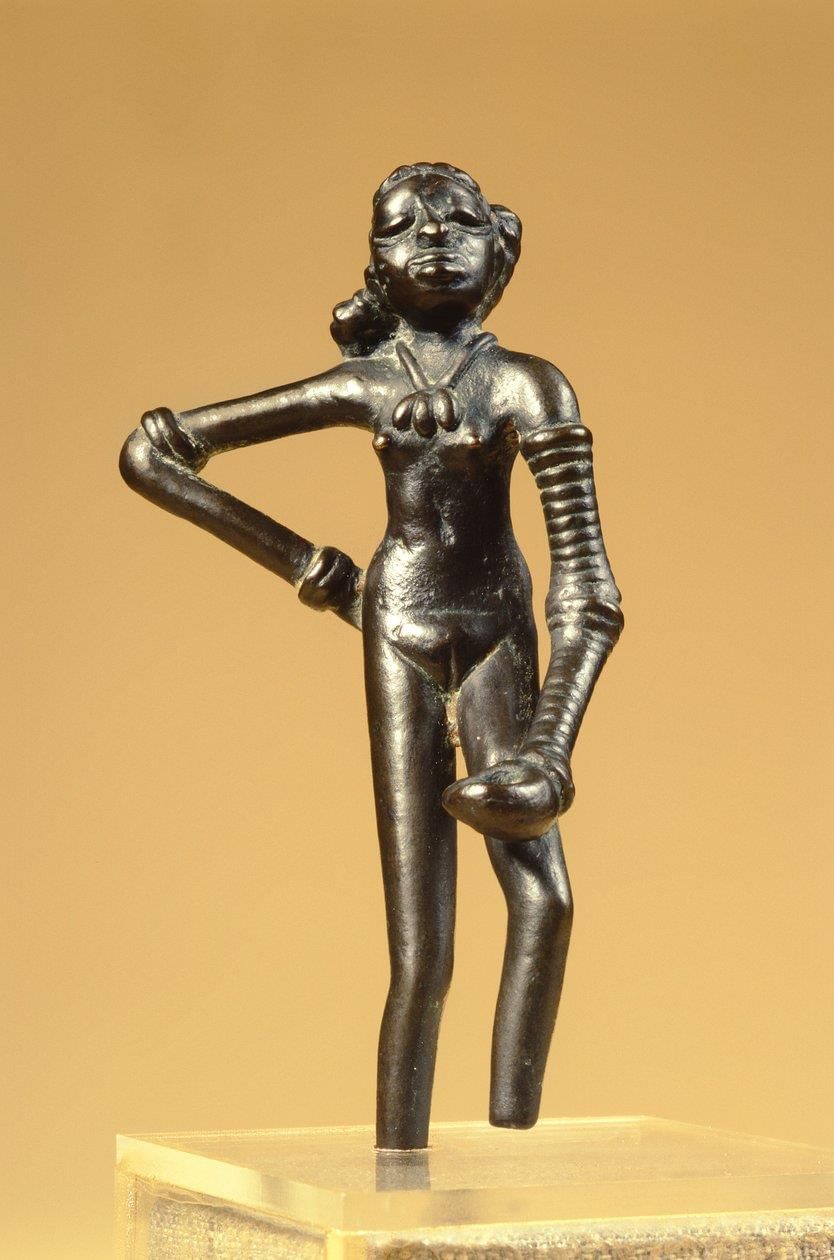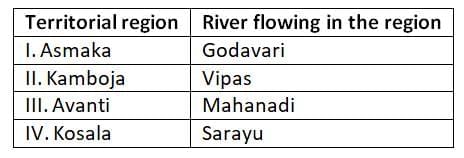UPSC Prelims Previous Year Questions 2025: History | History for UPSC CSE PDF Download
Q1: The famous female figurine known as 'Dancing Girl', found at Mohenjo-daro, is made of
(a) Carnelian
(b) Clay
(c) Bronze
(d) Gold
 View Answer
View Answer 
Answer: (c)
The 'Dancing Girl' figurine from Mohenjo-daro, a masterpiece of Indus Valley art, is crafted from bronze using the lost-wax casting technique.
Q2: The first Gandharva Mahavidyalaya, a music training school, was set up in 1901 by Vishnu Digambar Paluskar in
(a) Delhi
(b) Gwalior
(c) Ujjain
(d) Lahore
 View Answer
View Answer 
Answer: (d) Lahore
Vishnu Digambar Paluskar founded the first Gandharva Mahavidyalaya in Lahore in 1901, a key milestone in formalizing Indian music education to preserve and promote classical music traditions.
Q3: Consider the following statements in respect of the Non-Cooperation Movement:
I. The Congress declared the attainment of 'Swaraj' by all legitimate and peaceful means to be its objective.
II. It was to be implemented in stages with civil disobedience and non-payment of taxes for the next stage only if 'Swaraj' did not come within a year and the Government resorted to repression.
Which of the statements given above is/are correct?
(a) I only
(b) II only
(c) Both I and II
(d) Neither I nor II
 View Answer
View Answer 
Answer: (a)
Statement I: Correct
Congress at Nagpur (1920) aimed for Swaraj through legitimate, peaceful means.
Statement II: Incorrect
The Non-Cooperation Movement had a phased approach, but conditions for civil disobedience and tax non-payment were not strictly tied to Swaraj's delay or government repression; Gandhi retained discretion over civil disobedience.
Q4: Consider the following subjects with regard to Non-Cooperation Programme:
I. Boycott of law-courts and foreign cloth
II. Observance of strict non-violence
III. Retention of titles and honours without using them in public
IV. Establishment of Panchayats for settling disputes
How many of the above were parts of Non-Cooperation Programme?
(a) Only one
(b) Only two
(c) Only three
(d) All the four
 View Answer
View Answer 
Answer: (c)
Statement I: Correct
Boycott of law courts and foreign cloth was central to the Non-Cooperation Movement.
Statement II: Correct
Gandhi emphasized strict non-violence during the movement.
Statement III: Incorrect
The programme required surrendering, not retaining, British titles and honours.
Statement IV: Correct
Establishing Panchayats for local dispute resolution was promoted.
Q5: Subsequent to which one of the following events, Gandhiji, who consistently opposed untouchability and appealed for its eradication from all spheres, decided to include the upliftment of 'Harijans' in his political and social programme?
(a) The Poona Pact
(b) The Gandhi–Irwin Agreement (Delhi Pact)
(c) Arrest of Congress leadership at the time of the Quit India Movement
(d) Promulgation of the Government of India Act, 1935
 View Answer
View Answer 
Answer: (a)
Post-Poona Pact (1932) with Dr. B.R. Ambedkar, Gandhi prioritized Harijan upliftment, opposing the British Communal Award’s separate electorates for Depressed Classes. He founded the Harijan Sevak Sangh and launched the 'Harijan' journal to combat untouchability.
Q6: Consider the following statements about Raja Ram Mohan Roy:
I. He possessed great love and respect for the traditional philosophical systems of the East.
II. He desired his countrymen to accept the rational and scientific approach and the principle of human dignity and social equality of all men and women.
Which of the statements given above is/are correct?
(a) I only
(b) II only
(c) Both I and II
(d) Neither I nor II
 View Answer
View Answer 
Answer: (c)
Statement I: Correct
Raja Ram Mohan Roy respected Indian traditions, particularly Vedanta, while advocating for their reform to align with modern values.
Statement II: Correct
He promoted rationalism, scientific thinking, and social equality, emphasizing equal rights for men and women.
Q7: Who among the following was the founder of the 'Self-Respect Movement'?
(a) 'Periyar' E. V. Ramaswamy Naicker
(b) Dr. B. R. Ambedkar
(c) Bhaskarrao Jadhav
(d) Dinkarrao Javalkar
 View Answer
View Answer 
Answer: (a)
The Self-Respect Movement, launched in 1925, sought to eliminate caste hierarchies and foster social equality, particularly for non-Brahmin communities in Tamil Nadu. Its founder aimed to combat caste oppression while advocating for rationalism and equality.
Q8: Who provided legal defence to the people arrested in the aftermath of Chauri Chaura incident?
(a) C. R. Das
(b) Madan Mohan Malaviya and Krishna Kant
(c) Dr. Saifuddin Kitchlew and Khwaja Hasan Nizami
(d) M. A. Jinnah
 View Answer
View Answer 
Answer: (b)
Following the 1922 Chauri Chaura incident, numerous arrests led to harsh punishments, including death sentences. Madan Mohan Malaviya and his son Krishna Kant provided legal defense, significantly reducing sentences and saving many from execution.
Q9: 'Sedition has become my religion' was the famous statement given by Gandhiji at the time of
(a) the Champaran Satyagraha
(b) publicly violating Salt Law at Dandi
(c) attending the Second Round Table Conference in London
(d) the launch of the Quit India Movement
 View Answer
View Answer 
Answer: (b)
During the 1930 Salt Satyagraha, Gandhi declared "Sedition has become my religion" after defying British authority by publicly breaking the Salt Law at Dandi, symbolizing non-violent resistance.
Q10: Consider the following fruits:
I. Papaya
II. Pineapple
III. Guava
How many of the above were introduced in India by the Portuguese in the sixteenth and seventeenth centuries?
(a) Only one
(b) Only two
(c) All the three
(d) None
 View Answer
View Answer 
Answer: (c)
Papaya, pineapple, and guava, originally from the Americas, were introduced to India by Portuguese explorers during European colonial expansion. Papaya and guava, native to Central America, arrived in the 16th and 17th centuries, respectively, while pineapple, from South America, was also brought by the Portuguese.
Q11: Fa-hien (Faxian), the Chinese pilgrim, travelled to India during the reign of
(a) Samudragupta
(b) Chandragupta II
(c) Kumaragupta I
(d) Skandagupta
 View Answer
View Answer 
Answer: (b)
Fa-hien, a Chinese Buddhist pilgrim, visited India during Chandragupta II’s reign in the early 5th century CE to study Buddhism and collect texts. His accounts offer insights into Gupta India’s society, administration, and Buddhist practices. Other listed rulers do not match this period.
Q12: With reference to ancient India (600–322 BC), consider the following pairs:
How many of the pairs given above are correctly matched?
(a) Only one
(b) Only two
(c) Only three
(d) All the four
 View Answer
View Answer 
Answer: (b)
I. Asmaka: Godavari – Correct, as Asmaka was a Mahajanapada on the Godavari river in the Deccan.
II. Kamboja: Vipas – Incorrect, as Kamboja was in north-western India, not near the Vipas (Beas) river in Punjab.
III. Avanti: Mahanadi – Incorrect, as Avanti, centered in Ujjain, was associated with the Kshipra river, not Mahanadi.
IV. Kosala: Sarayu – Correct, as Kosala, in eastern Uttar Pradesh, was located along the Sarayu river.
Q13: Ashokan inscriptions suggest that the 'Pradesika', 'Rajuka' and 'Yukta' were important officers at the
(a) village-level administration
(b) district-level administration
(c) provincial administration
(d) level of the central administration
 View Answer
View Answer 
Answer: (b)
Ashokan inscriptions describe 'Pradesika' as district administrators, 'Rajuka' as officials overseeing revenue and judicial matters, and 'Yukta' as subordinate officials handling administration and record-keeping at the district level.
Q14: Who among the following led a successful military campaign against the kingdom of Srivijaya, the powerful maritime State, which ruled the Malay Peninsula, Sumatra, Java and the neighbouring islands?
(a) Amoghavarsha (Rashtrakuta)
(b) Prataparudra (Kakatiya)
(c) Rajendra I (Chola)
(d) Vishnuvardhana (Hoysala)
 View Answer
View Answer 
Answer: (c)
Rajendra Chola I, succeeding Rajaraja I, launched a naval expedition against Srivijaya around 1025 CE, targeting the maritime empire in the Malay Peninsula, Sumatra, and Java to secure Chola trade route dominance. Other rulers—Amoghavarsha (Rashtrakuta), Prataparudra (Kakatiya), and Vishnuvardhana (Hoysala)—did not campaign against Srivijaya, focusing instead on regional Deccan or South Indian affairs.
Q15: Who among the following rulers in ancient India had assumed the titles 'Mattavilasa', 'Vichitrachitta' and 'Gunabharata'?
(a) Mahendravarman I
(b) Simhavishnu
(c) Narasimhavarman I
(d) Simhavarman
 View Answer
View Answer 
Answer: (a)
Mahendravarman I, a 7th-century Pallava king, was renowned for literary and artistic patronage, taking titles like ‘Mattavilasa’ (lover of playful sport), ‘Vichitrachitta’ (curious-minded), and ‘Gunabharata’ (full of virtues). He wrote the Sanskrit play Mattavilasa Prahasana. Other listed rulers did not use these titles.
Q16: The irrigation device called 'Araghatta' was
(a) a water bag made of leather pulled over a pulley
(b) a large wheel with earthen pots tied to the outer ends of its spokes
(c) a larger earthen pot driven by bullocks
(d) a large water bucket pulled up by rope directly by hand
 View Answer
View Answer 
Answer: (b)
The Araghatta, an ancient Indian irrigation tool, was a large wheel with earthen pots attached to its rim. Rotated by animals or humans, it scooped water from a source and lifted it for irrigation, distinct from hand-pulled leather bags or buckets, showcasing early mechanical water-lifting technology.
|
216 videos|855 docs|219 tests
|
FAQs on UPSC Prelims Previous Year Questions 2025: History - History for UPSC CSE
| 1. What are some key historical events that shaped the Indian independence movement? |  |
| 2. Who were the prominent leaders of the Indian independence movement, and what were their contributions? |  |
| 3. What role did the British policies play in the discontent among Indians during colonial rule? |  |
| 4. How did World War II influence India's struggle for independence? |  |
| 5. What was the significance of the Round Table Conferences in the context of Indian independence? |  |
















